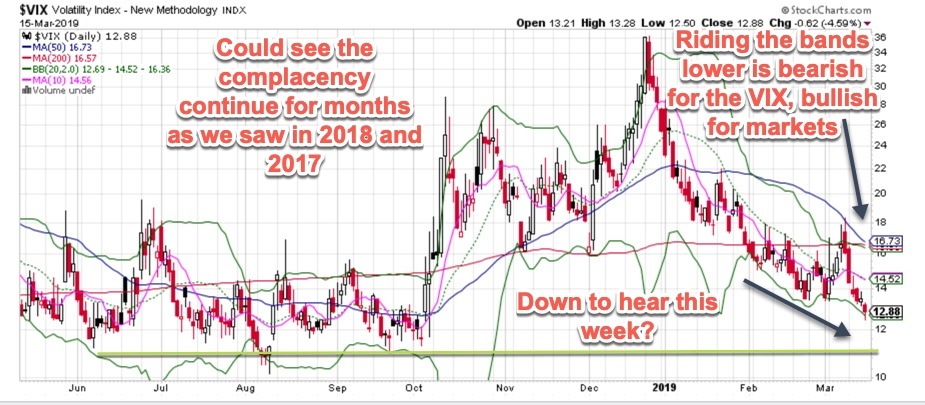Since the mini bear market/correction finished up at the end of 2018, the volatility index (VIX) has been smashed down. However, now that the VIX is low, it’s time to be cautious. I’ll explain why in a minute.
First, let’s take a look at the steep drop on the VIX chart. As the markets rallied 22% higher, volatility plummeted. Remember when the VIX sat in the mid 30’s on December 24? It’s now in the low teens in less than three months, a truly historic move. The VIX is back to the low levels from last summer and fall. During that time, complacency built up. As a result, the correction in December caught many off guard.
When the VIX is low…
For the most part, the market complies with the direction of volatility. Short pops in the VIX often mean brief and potentially scary dips in the markets. We saw that earlier this month. Take a look at the chart, and you will see that the VIX rose from 13 to 18 in about five sessions.
Just as the stock indices embark on a breakout move in price, the VIX indicates complacency. As I mentioned above, complacency means we will see a pop in volatility and a drop in prices. Are you ready for it?
We talk about buying protection, aka insurance, all the time. This is the time to do it. With low volatility, option puts are inexpensive. Plus, it’s better to be safe than sorry. Markets can correct at any time, and if you’re not prepared, it’ll hurt your portfolio. (With the markets up sharply, it’s not a bad idea to take some money off the table, too. Most pros are doing it. But that doesn’t mean you need to sell everything!)
The cost of buying some insurance for your portfolio is negligible. A SPY 280 put that expires next week was less $1 at the close on March 15. If you had strong gains last week, it would be a shame to give them up. I suggest looking at SPY, QQQ, IWM and DIA puts. If we’re wrong and the markets head higher, you didn’t pay through the nose for protection – but you did sleep well at night.





















